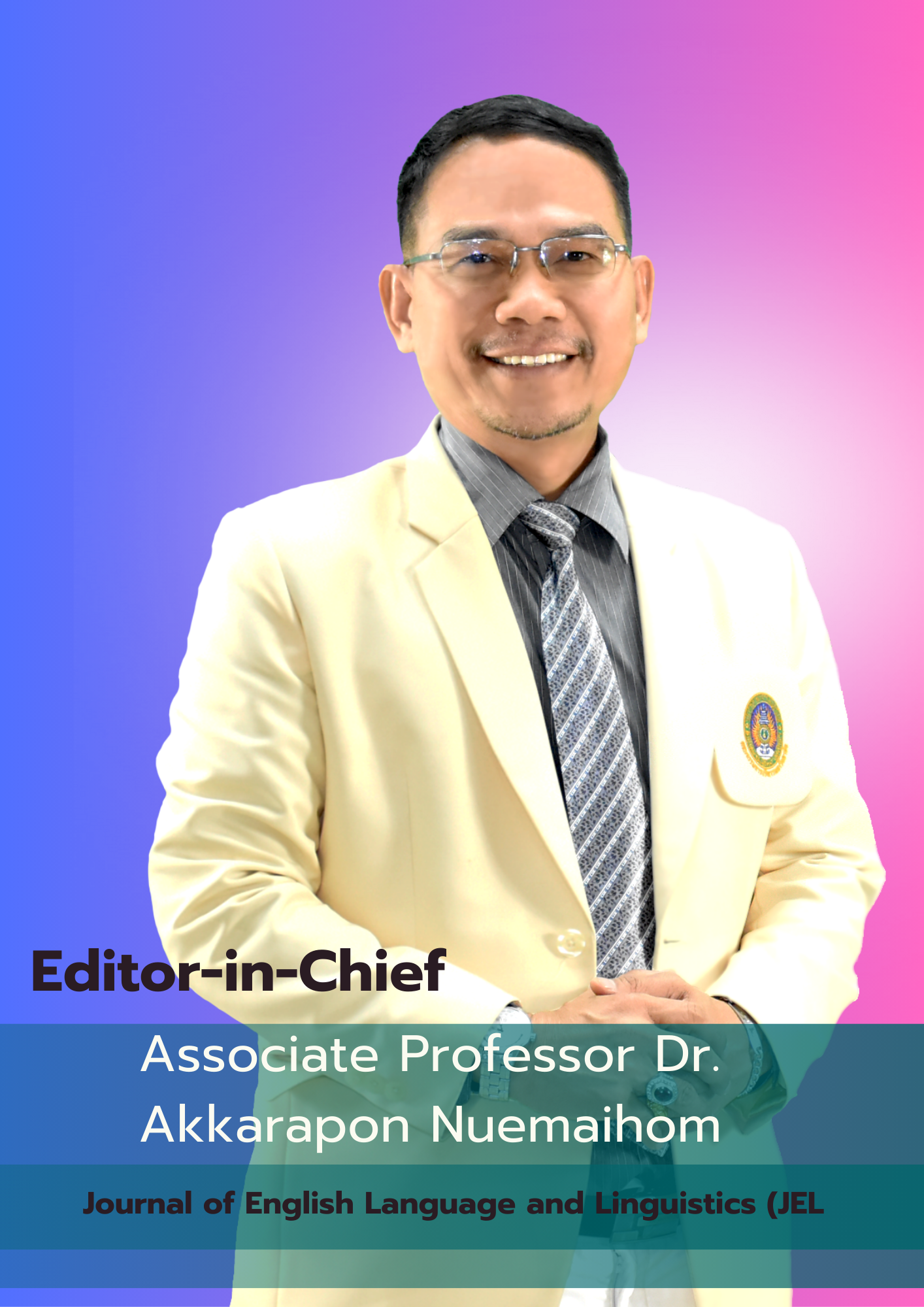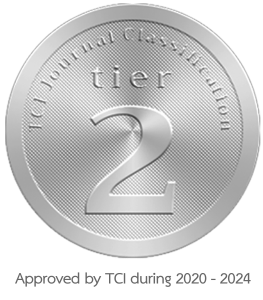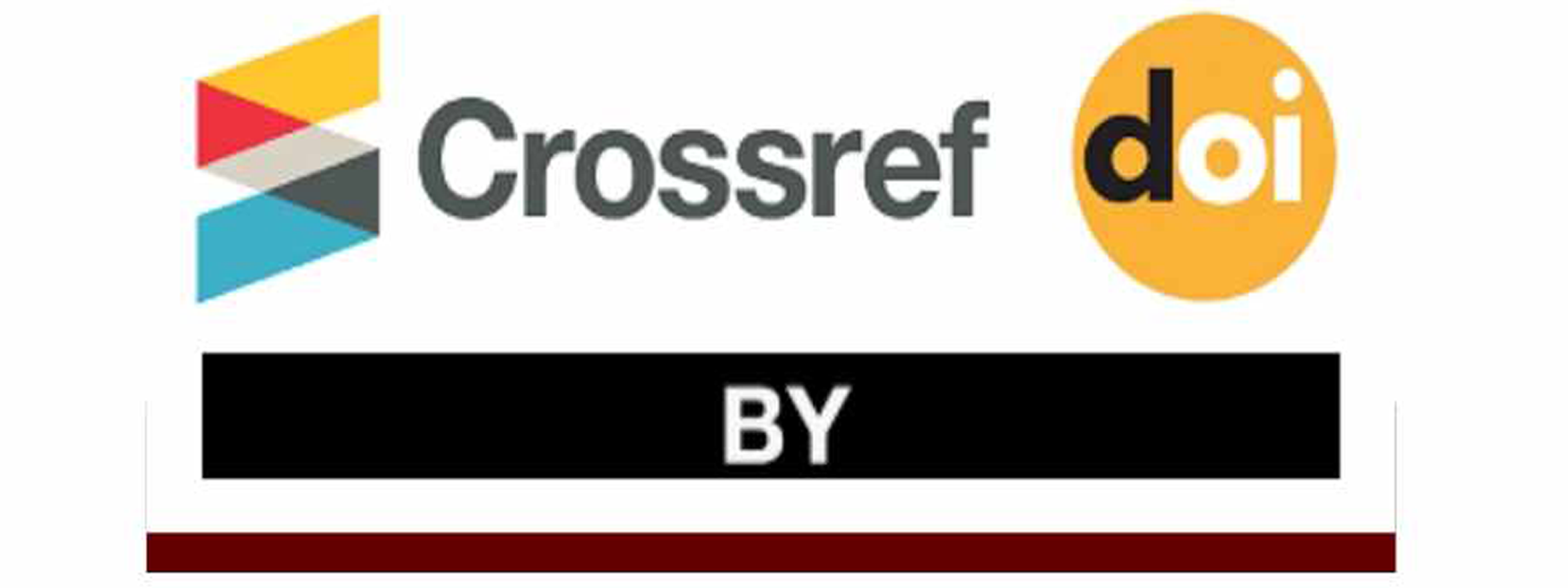EFL Pre-service Teachers’ Perceptions about the Advantages and Disadvantages of Peer Team Teaching Experiences
DOI:
https://doi.org/10.14456/jel.2023.11Keywords:
Peer Team teaching, EFL pre-service teachers, advantages and disadvantage, perceptionAbstract
This study aimed to investigate the perceptions of EFL pre -service teachers (PTs) towards the advantages and disadvantages of their peer team teaching(PTT) experiences. The sample consisted of 52 participants, with equal numbers of males and females, from the English Language Department of the College of Education at Seiyun University. Qualitative and quantitative techniques were employed to gather the data, including reflective reports and a questionnaire.These findings prove that PTT has numerous benefits for PTs. The five most common advantages included increasing confidence, correcting the mistakes of one another, preparing a better lesson plan, exchanging experiences, skills, and knowledge, and overcoming challenging situations in teaching. On the other hand, some PTs held negative opinions towards PTT. The five most significant disadvantages included disagreement among team members, reliance of some members on other members to do the work on their behalf, not following the lesson plan, late completion of the work due to disagreement among the team members, and unequal division of work among the members. The findings revealed that PTs’ perceptions of PTT’s advantages and disadvantages did not differ significantly based on gender. The researcher recommends that EFL PTs implement PTT during their preparation stage, as it has many benefits for PTs’ professional development.
References
Anthony, G., & Ord, K. (2008). Change of career secondary teachers: Motivations, expectations and intentions. Asia-Pacific Journal of Teacher Education, 4(36), 359-376. https://doi.org/10.1080/13598660802395865 DOI: https://doi.org/10.1080/13598660802395865
Bacharach, N., Heck, T. W., & Dahlberg, K. (2010).Researching the use of coteaching in the student teaching experience. In: Murphy, C., Scantlebury, K. (eds). Coteaching in international contexts. Cultural Studies of Science Education, 1(1) , 35-52. https://doi.org/10.1007/978-90-481-3707-7_3 DOI: https://doi.org/10.1007/978-90-481-3707-7_3
Baeten, M., & Simons, M. (2014), Student teachers team teaching: Models, effects and conditions for implementation. Teaching and Teacher Education, 41(1), 92-10. https://doi.org/10.1016/j.tate.2014.03.010 DOI: https://doi.org/10.1016/j.tate.2014.03.010
Banks, D., & Stave, A. (1998). Modeling curriculum integration with secondary pre-service teachers: A case study. Educational Research Quarterly, 22(1), 47-57.
Barahona, M. (2017). Exploring models of Team Teaching in Initial Foreign/Second Language Teacher Education: A Study in Situated Collaboration.Australian Journal of Teacher Education, 42(12), 144-161. https://doi.org/10.14221/ajte.2017v42n12.9 DOI: https://doi.org/10.14221/ajte.2017v42n12.9
Bolstad, F., & Zenuk-Nishide, L. (2016). Beyond the deficit model co-constructing team teaching to address learner goals and needs. In A. Tajino, T. Stewart and D. Dalsky, Team Teaching and Team Learning in the Language Classroom: Collaboration for innovation in ELT, 78-93. Routledge. DOI: https://doi.org/10.4324/9781315718507-8
Britton, L. R., & Anderson, K. A. (2010). Peer coaching and pre-service teachers: Examining an underutilized concept. Teaching and Teacher Education, 26(2), 306-314. DOI: https://doi.org/10.1016/j.tate.2009.03.008
Casey, P., Dunlap, K., Brister, H., Davidson, M., & Starrett, T. (2011). Sink or swim? Throw us a life jacket! Novice alternatively certified bilingual and special education teachers deserve options.Education and Urban Society, 45(3), 287-306. http://dx.doi.org/10.1177/0013124511408075 DOI: https://doi.org/10.1177/0013124511408075
Chitiyo, J. (2017). Challenges to the use of coteaching by teachers. International Journal of Whole Schooling,13(3), 55-66.
Chivers, B., & Schoolbred, M. (2007). A student's guide to presentations: Making your presentation count. SAGE Publications.
Coleman, H., Boit, R., Butterworth, L., Paro, K. L., Ricks, T., Hestenes, L., Ozdemir, M., & Aal-Anubia, A. J. (2023). Effective teaching strategies: Pre-service teachers’ experiences in team taught courses in an interdisciplinary early childhood teacher education program. Teaching and Teacher Education, 121(1) , 1 -10. https://www.sciencedirect.com/science/article/pii/S0742051X22003122 DOI: https://doi.org/10.1016/j.tate.2022.103937
Crawford, R., & Jenkins, L. E. (2018). Making pedagogy tangible: developing skills and knowledge using a team teaching and blended learning approach.Australian Journal of Teacher Education, 43(1), 127-142. http://ro.ecu.edu.au/ajte/vol43/iss1/8 DOI: https://doi.org/10.14221/ajte.2018v43n1.8
Folker, H., Levi, O., & Zala, V. (2009). Theoretical and practical issues in team teaching a large undergraduate class. International Journal of Teaching and Learning in Higher Education, 21(1), 66-74.
Friend, M., & Cook, L. (1996a). Interactions: Collaboration skills for school professionals. Longman.
Friend, M., & Cook, L. (1996b). The power of 2: Making a difference through co- teaching [Videotape]. Available from the Forum on Education, Smith Research Center, Suite 103, Indiana University/On-site, Bloomington, IN 47405-1006.
Gordana, M., Stepić, Daliborka, R., & Popović. (2022). Planning, realization and evaluation of team teaching: teachers’ perspective. DHS,2(19), 609-630. DOI: https://doi.org/10.51558/2490-3647.2022.7.2.593
Gower, R., Phillips, D., & Walters, S. (1995). Teaching practice handbook (New Edition). Mac Millan Heinemann.
Graziano, K. J., & Navarrete, L. A. (2012). Co-teaching in a teacher education classroom: Collaboration, compromise, and creativity. Issues in Teacher Education, 21(1), 209-126.
Hanusch, F., Obijiofor, L., & Volcic, Z. (2009). Theoretical and practical issues in team teaching a large undergraduate class. International Journal of Teaching and Learning in Higher Education, 21(1), 66-74.
Heck, T. W., Bacharach, N., Dahlberg, N. (2008).Co-teaching: Enhancing the student teaching experience [Conference session]. Eighth Annual IBER, & TLC Conference Proceedings, Las Vegas, NV, United States.
Hsu, S. (2007). Help-seeking behaviour of student teachers.Educational Research, 49(3), 307-318.
http://dx.doi.org/10.1080/00131880500287716 DOI: https://doi.org/10.1080/00131880500287716
Jin, S., & Nasara, A. (2000). Collaborative team teaching approach in a technology course. In D. Willis, J. Price & J. Willis (Eds.),Proceedings of SITE 2000--Society for Information Technology & Teacher Education International Conference (pp. 329-334). Association for the Advancement of Computing in Education (AACE). Retrieved from https://www.learntechlib.org/primary/p/15577/
Kaenzig, Rebecca & Anderson, S., & Hyatt, Eva & Griffin, L. (2006). Gender differences in students' perceptions of group learning experiences. Academy of Educational Leadership Journal, 10, 119-127.
Kamens, M. (2007). Learning about co-teaching: A collaborative student teaching experience for pre-service teachers.Teacher Education and Special Education: The Journal of the Teacher Education Division of the Council for Exceptional Children, 30(3), 155-166. http://dx.doi.org/10.1177/088840640703000304 DOI: https://doi.org/10.1177/088840640703000304
Knights, S., & Sampson, J. (1995). Reflection in the context of team teaching. Studies in Continuing Education,17(1 & 2), 57-69. https://doi.org/10.1080/0158037950170106 DOI: https://doi.org/10.1080/0158037950170106
Kurtts, S., & Levin, B. (2000). Using peer coaching with pre-service teachers to develop reflective practice and peer support. Teaching Education, 11(3), 297-310. https://doi.org/10.1080/713698980 DOI: https://doi.org/10.1080/713698980
Lu, H. L. (2010). Research on peer coaching in p re-service Teacher education: A review of literature. Teaching and Teacher Education, 26(1) , 748-753. DOI: https://doi.org/10.1016/j.tate.2009.10.015
Mansell, J. (2006). Team teaching in further education. Educational Research, 17(1), 19-26. https://doi.org/10.1080/0013188740170102 DOI: https://doi.org/10.1080/0013188740170102
Mikyung, S., Lee, H., & McKenna, J.W. (2016). Special education and general education pre-service teachers’ co-teaching experiences: a comparative synthesis of qualitative research,International Journal of Inclusive Education, 20(1), 91-107. https://doi.org/10.1080/13603116.2015.1074732 DOI: https://doi.org/10.1080/13603116.2015.1074732
Mononen, M. Havu-Nuutinen, S., & Haring, M. (2023). Student teachers’ experiences in teaching practice using team teaching in flexible learning space. Teaching and Teacher Education, 125(1). Retrieved from https://www.sciencedirect.com/science/article/pii/S0742051X23000574 DOI: https://doi.org/10.1016/j.tate.2023.104069
Nokes, J. D., Bullough Jr, R. V., Egan, W. M., Birrell, J. R., & Hansen, J. M. (2008). The paired-placement of student teachers: An alternative to traditional placements in secondary schools.Teaching and Teacher Education, 24(8), 2168-2177. DOI: https://doi.org/10.1016/j.tate.2008.05.001
Roth, W. M., & Tobin, K. (2002). At the elbow of one another: Learning to teach by coteaching. Peter Lang.Smith, J. (2002). The development of tandem teaching placements. Mentoring & Tutoring: Partnership in Learning, 10(3), 253-274. http://dx.doi.org/10.1080/1361126022000022507. DOI: https://doi.org/10.1080/1361126022000022507
Smith, J. (2004). Developing paired teaching placements. Educational Action Research, 12(1), 99-125. DOI: https://doi.org/10.1080/09650790400200241
Smith, J. J., & Fogarty, E. (2016). Team Teaching and the Application in the Course English Teaching Methodology by CET and NSET in China. English Language Teaching, 3(1), 87-91.
Tsybulsky, D., & Muchnik-Rozanov, Y. (2019). The development of student-teachers’ professional identity while team-teaching science classes using a project-based learning approach: A multi-level analysis. Teaching and Teacher Education.,79(1), 48-59. DOI: https://doi.org/10.1016/j.tate.2018.12.006
Vesikivi, P., Lakkala, M., Holvikivi, J., & Muukkonen, H. (2019) Team teaching implementation in engineering education: Teacher perceptions and experiences. European Journal of Engineering Education, 44(4), 519-534. https://doi.org/10.1080/03043797.2018.1446910 DOI: https://doi.org/10.1080/03043797.2018.1446910
Walsh, K., & Elmslie, L. (2005). Practicum pairs: an alternative for first field experience in early childhood teacher education.Asia-Pacific Journal of Teacher Education, 33(1), 5-21. http://dx.doi.org/10.1080/1359866052000341098 DOI: https://doi.org/10.1080/1359866052000341098



















